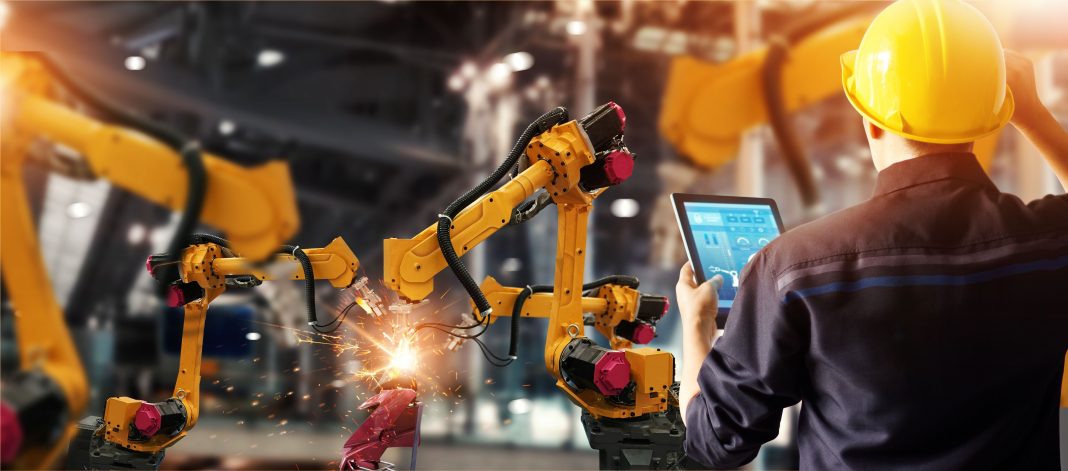Anil Sawhney, director of the infrastructure sector and Alan Muse, global director of built environment standards at RICS, discuss how artificial intelligence could transform the way we estimate the cost of construction projects
Our industry faces an ongoing challenge of controlling construction project costs and avoiding cost overruns. A plethora of studies have documented that as an industry we deliver projects that are often delayed and cost more than estimated at the time of project inception.
While the construction industry embarks on the much-touted journey to embrace leading-edge technologies—such as digital twins, blockchain, additive printing, laser scanning, and drones—it cannot lose sight of the fundamental responsibilities of meeting the key project metrics of time and cost. Emphasis on these metrics is not new.
For nearly seven decades the Project Management Triangle—also known as the Triple Constraint or Iron Triangle—has been used as a rubric for measuring project management success. Under this rubric, practitioners have considered time, cost, and scope to constrain project outcomes. Over the years, project teams have added other constraints such as safety, sustainability, and risk to this list.
With increasing public scrutiny, the importance of managing project cost has again come into the forefront. Given this emphasis, how can the industry address the issue of cost overruns? Can we use technology to improve the processes of estimating, budgeting, managing and controlling project costs to reduce cost overruns? More specifically can artificial intelligence (AI) improve the estimation of construction projects costs? This article articulates an answer to these important questions.
What is a construction estimate?
The dictionary meaning of an estimate is to ‘roughly calculate or judge the value, number, quantity, or extent of’ an activity. In the context of a construction project, an estimate is the approximate cost of resources required to complete the project. There are various forms of estimates produced over the life of a project. Early construction estimates are produced to determine the viability or affordability of the project whereas more accurate and detailed estimates are developed for procuring construction services.
How do we estimate construction costs?
Developing a project estimate requires expertise and sound knowledge of the domain. The accuracy of the estimate increases as the project progresses with more information becoming available. True accuracy only becomes apparent once the project is complete and we know the actual cost. However, the steps followed to develop an estimate are largely similar and can be broadly described as:
- Establish the class or level of the estimate to be developed congruently with the project stage ;
- Collect the available project information including work breakdown structure and scope;
- Identify key cost-defining project attributes from the project information;
- Collect additional information relating to project schedule and risk;
- Establish market conditions and other pertinent commercial information;
- Select an estimation method appropriate to the project stage to develop the quantum of resources needed:
- Analogous estimating: a similar past project is used to develop the project estimate.
- Parametric estimating: a reference class of projects is matched with attributes of the current project, and a statistical relationship is used to develop the estimate.
- Bottom-up estimating: a detailed method in which resources needed for individual components and elements of the project are used in the estimate.
- Use appropriate price books to calculate the project cost based on the quantum of resources needed.
Why are estimates not accurate?
Accuracy is defined as the closeness of the cost estimate to the actual cost of the project. Generally, the accuracy of early estimates when limited project information is available is low as compared to estimates that are developed with detailed project information. The accuracy of estimates has been debated and studied for several decades, but even today accuracy is no better than it ever was.
Experts blame inaccuracies on technical, psychological, and political-economic factors. As studies have advanced our understanding experts feel psychological, and political-economic factors play a dominant role and result in ‘optimism bias’ and ‘strategic misrepresentation’. While technical factors provide an inside view (i.e. project-specific view), psychological, and political-economic factors provide an outside view to the estimating process. The authors believe that data, data analytics, and AI can be used to strengthen the outside view to overcome the optimism bias and strategic misrepresentation in the construction estimates.
How can AI help?
While the debate whether data is the new oil or not rages, it is clear to us that large volumes of data that are available due to the pervasive nature of digitisation can help improve project estimates. Data analytics supported by AI techniques can help the organisations develop meaningful insights from organisation-wide and industry-wide historical data.
Broadly, AI can assist in the development of company-specific and industry-wide benchmarks that can reduce optimism bias and strategic misrepresentation. Specifically, we envision that AI can help the estimating process in the following ways:
- Classify and categorise unclassified cost data
- Develop statistical models for parametric estimating
- Identify reference class projects
Classify and categorise unclassified cost data
Organisations have an abundance of granular cost data that is generally unclassified and unstructured rendering it unusable. To utilise this type of historical data, it is essential that the data is classified using a high-level cost classification system such as the International Construction Measurement Standards (ICMS).
Unclassified cost data is generally available in a variety of electronic formats. AI tools that perform natural language processing can be used to classify this type of data into a predefined cost classification system such as ICMS. A natural language classifier can be first trained and tested using historical cost data. Once the system is trained, it can process large volumes of cost data from historical projects and classify it into cost categories and cost groups (as shown in the figure below). After the data is classified, several important analyses including cost benchmarking can be performed.
Alan Muse, global director of built environment standards at RICS, commented: “Broadly, AI can assist in the development of company-specific and industry-wide benchmarks that can reduce optimism bias and strategic misrepresentation.”
Develop statistical models for parametric estimating
Artificial neural networks (ANN) are a form of artificial intelligence that is inspired by the human nervous system; more precisely the neurons. It is one of the main tools used in machine learning.
An ANN consists of an input layer, an output layer, and one or more hidden layers. All these layers consist of neurons that are connected by adjustable weights. The input layer receives inputs, and the output layer provides an answer to the problem that is being solved using the ANN. It is a good tool for parametric estimation where a statistical model between historical data and other variables is used to estimate the cost of a project.
For example, if we have historical cost data of 100 similar buildings that consist of key project attributes such as height of the building, constructed area, type of construction, class of building, building use, etc. along with the actual cost of the building we can design an ANN to predict the cost of a new building. Out of the sample data, we will use most of the data to train the ANN so that it ‘learns’ (by repeatedly comparing predicted output with the known output of the training data set and constantly adjusting the connection weights until predictions become accurate) to predict cost and then use the remaining sample data to test and validate the ANN.
After this process of supervised learning and testing, we can use input for a new building project to predict the cost by using the trained ANN.
Identify reference class projects
For analogous estimating it is vital to identify a comparable historical project that can be used to estimate the cost of a new project. Identifying and recalling the comparator project can be enhanced by using case-based reasoning (CBR) which is another form of AI.
In CBR a historical database of projects is used to ‘retrieve’ a similar project by matching a set of project attributes using a metric called similarity index. The project estimation information and knowledge from the retrieved project are ‘reused’ to arrive at a preliminary estimate. The data from the retrieved data is called the ‘suggested’ cost data, and the resulting solution is called the suggested solution. This solution is further improved via the ‘revise’ process which leads to the confirmed data for the cost estimate. The new project itself is ‘retained’ in the historical project database as a learned case or project for future use.
What does this mean?
In conclusion, the authors envision that the overall estimation process and its accuracy can be enhanced by using historical cost data and analytics powered by AI.
AI-based predictive tools can harness the power of cost data that idly sits in an organisation’s estimating systems, cost management systems, and procurement systems. These tools can inform early-stage cost advice for new projects, provide accurate and precise cost estimates, help in monitoring and controlling project costs, and at times assist in forensic cost analysis. Market conditions and economic factors such as commodity prices can also be brought into the mix to allow estimators to consider an outside view.
While this is a promising prospect, some implementation challenges remain. Foremost amongst these is the hesitation amongst project proponents to share cost data. While the data may be there the willingness to share the data may be low.
Initially, data internal to the organisation can be collected and used for AI-powered analytics. For industry-wide benchmarks and related solutions, clients must lead the way. For example, clients such as the UK Department for Transport have started a benchmarking program under the aegis of a program entitled transport infrastructure efficiency strategy (TIES). Professional bodies such as the RICS can play an important role in data collection, validation, and curation since they can act impartially and independently supporting the public good. Such industry-wide initiatives can provide practitioners with the support they need to conduct important analysis such as value-for-money, lifecycle costing, and performance benchmarking.
This, in turn, will open a new debate relating to the future of our profession. What will this mean for the professionals especially those working in the quantity surveying, project management, and related professions? Will we have to retrain and re-educate to embrace AI and the power that it brings? There is little doubt AI will enhance professional skills and professional judgment so that we can provide sound advice to our clients.
Anil Sawhney
Director of the infrastructure sector
RICS

















